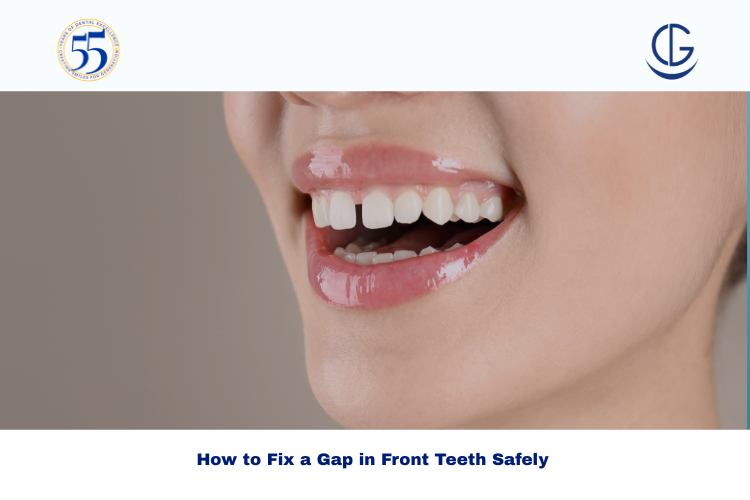Schedule Appointment




A space or gap in front teeth is the type of thing almost everyone catches a glimpse of in the mirror at some stage. For some people, a gap is simply a part of your smile, while for others, it may be seen as a cosmetic issue they’d like to have rectified. At Dr Gowds Dental Hospital, Hyderabad, we see plenty of patients every week wondering if the space in between their front teeth is normal standard behaviour, or if it indicates an issue with their teeth.
We’ll look into why this happens, when gaps are considered normal, and when you may want to consider front teeth gap filling, or other treatment options.
A gap in front teeth, also called diastema, is simply an empty space between two teeth. While it can occur anywhere in the mouth, it’s most common between the upper front teeth gap, which makes it more visible.
Some people embrace it as a unique part of their look, while others feel self-conscious. Whether it’s a problem or not depends on the cause and whether it affects your bite, speech, or gum health.
There are several reasons why gap teeth appear. Here are the most frequent ones we see in our clinic:
Sometimes yes, sometimes no. In many people, a small front teeth gap is harmless and doesn’t require any treatment at all. In fact, in certain cultures, it’s even seen as a sign of good luck.
But if the gap between front teeth keeps getting wider, affects how you bite, or is linked with gum disease, it can become more than just a cosmetic issue. That’s when it’s smart to see a dentist.
If you’ve been wondering how to fill teeth gap, dentistry today offers many safe and reliable solutions. The right choice depends on the size of the gap, its cause, and your personal preference.
This option is fast and inexpensive. Tooth-colored resin is placed and sculpted to fill in the space between the front teeth. Works best if the gap is small.
Thin shells of porcelain are placed over the teeth to mask a gap with the front teeth. Veneers provide a natural look and can last many years, and are great for improving cosmetics of the teeth.
Braces or clear aligners will slowly move the teeth into better positions. This treatment is ideal if the gap is large, or if there are other alignment problems as well with the front teeth gap.
If there are missing teeth that are creating the gap, replacing those teeth with an implant and/or bridge can restore function and aesthetics.
In some cases, the gum tissue (the frenum) between the teeth is thick and creates tension that keeps the front teeth gap open. A small surgical procedure can remove tissue to repair the issue.
Not every gap needs fixing, but you should definitely consult a dentist if you notice:
At Dr Gowds Dental Hospital, Hyderabad, our specialists carefully examine the cause and guide you through the best front teeth gap filling options.
Some gaps can’t be avoided, especially if they’re genetic. But you can lower your risk with good oral care:
A gap in front teeth doesn’t always mean trouble. For many people, it’s completely natural. But if the space between front teeth bothers you or affects your oral health, there are excellent treatments available — from teeth gap filling and veneers to orthodontics.
The most important step is getting expert advice. At Dr Gowds Dental Hospital, Hyderabad, our dental team can help you choose the right approach for a healthy, confident smile.
Having a slight gap between your front teeth may not be harmful. However, it’s best to visit a dentist if it causes issues with chewing, gum disease, or continues to widen.
For small gaps, dental bonding is the easiest and quickest solution. Larger gaps may need veneers or braces. Only a dentist can recommend the right option.
Yes, treatments such as veneers and orthodontic correction can be long-term (or even permanent) solutions to gaps, assuming there is good oral hygiene in place.
The cost depends on what treatment you will choose. Bonding is relatively cheap, but veneers or orthodontics can be expensive, cost-wise. To get an accurate estimate visit Dr Gowds Dental Hospital for a consultation in Hyderabad.
No, most front teeth gap filling procedures are painless. Options like bonding and veneers are quick and comfortable, while orthodontics may involve mild, temporary discomfort.